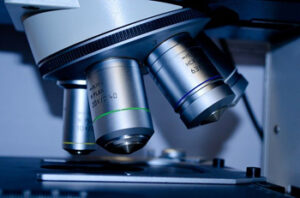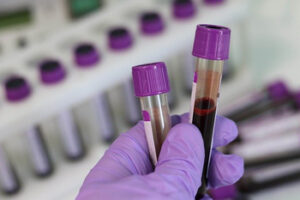Medical Laboratory Technician Questions and Answers
People who are seeking for Medical Laboratory Technician Questions and Answers Model Papers can get here. On our page, you will get Lab Technician Job Interview Questions latest question papers along with solutions. Aspirants who applied for Medical Technologist Jobs might have started their preparation. Those candidates need to solve Lab Technician Interview Questions to get the experience and to know the difficulty level of exam. Therefore check last year’s Lab Technician Questions Answers Model Papers. Applicants can also get Lab Technician Job Interview Questions Study Material, Preparation Tips along with Lab Technician Job Interview Questions Previous Papers.
Those candidates need to solve Lab Technician Interview Questions to get the experience and to know the difficulty level of exam. Therefore check last year’s Lab Technician Questions Answers Model Papers. Applicants can also get Lab Technician Job Interview Questions Study Material, Preparation Tips along with Lab Technician Job Interview Questions Previous Papers.
Before going to start the preparation, it’s better to check the Lab Technician Job Interview Questions Pattern to make your preparation easy and effective. Therefore get complete information regarding Lab Technician Questions Answers, Test Pattern along with Lab Technician Questions Answers Old Question Papers from the below sections.
Checking all the Lab Technician Questions Answers Model Papers and Sample Papers!! Later, check the Latest Medical Laboratory Technician Questions and Answers. The Lab Technician Questions Answers Previous Papers pdf Free Download available here.
Hence, candidates who are going to write exam may download Medical Laboratory Technician Questions and Answers Model Papers with Answers for free of cost. Aspirants can also get Medical Laboratory Technician Questions and Answers.
Lab Technician Questions Answers Previous Papers are uploaded here to help the candidates who are appearing for the Exam.
Model Questions and Answers on Medical Laboratory Technician
1. The length of Oesophagus is
(a) 24 cm
(b) 25 cm
(c) 26 cm
(d) None of these
2. The production of gastric juice per day is about
(a) 1.5 litres
(b) 1.0 lites
(c) 1.25 litres
(d) 2 litres
3. The weight of liver is about
(a) 1.5 kgs
(b) 2 kgs
(c) 2.50 kgs
(d) None of these
4. The size of the kidneys are
(a) 12×5×3 cms
(b) 12×6×4 cms
(c) 12×7×5 cms
(d) None of these
5. The lining epithelium of urinary bladder is
(a) Squamous cells
(b) Transitional cells
(c) Columnar cells
(d) Ciliated columnar cells
6. The length of fallopian tubes are
(a) 17 cms
(b) 14 cms
(c) 15 cms
(d) 16 cms
7. The lining epithelium of cervix (ectocervix) is
(a) Glandular epithelium
(b) Squamous epithelium
(c) Navicular cells
(d) Cuboidal epithelium
8. The buffer solution is prepared by combining
(a) A weak acid and its salt
(b) A weak base and its salt
(c) Acidic salt and basic salt
(d) All of these
9. The enzymes mainly used in ELISA Technique are
(a) Acid phosphatase
(b) Glucose oxidase
(c) Alkaline phosphatase
(d) Both (b) and (c)
10. Which is flammable hazard
(a) Picric acid
(b) Ether
(c) Hydrochloric acid
(d) Sodium cyanide
11. 1g means
(a) 100 mg
(b) 10 mg
(c) 1000 mg
(d) 10000 mg
12. When strong acid is mixed with water
(a) Water is added to acid
(b) Acid is added to water slowly
(c) Both (a) & (b)
(d) None of these
13. These are cellular organelles called “suicide bags”
(a) Lysosomes
(b) Ribosomes
(c) Nucleolus
(d) Golgi’s bodies
14. The following substances are cell inclusions, except
(a) Melanin
(b) Glycogen
(c) Lipids
(d) Vitamins
15. Which of the following is reducing compounds?
(a) Co2
(b) O2
(c) NADH
(d) NAD+
16. The first law of thermodynamics states that energy can be
(a) Converted
(b) Destroyed
(c) Created
(d) All of these
17. A catalyst
(a) Stops a reaction
(b) Speed up a reaction
(c) Slow down a reaction
(d) Make a reaction to go in different direction
18. Chemically water is
(a) Amphoteric
(b) Neutral
(c) Alkaline
(d) Acidic
19. Positive Benedict’s test in urine, means the presence of
(a) Sucrose
(b) Non glucose reducing substance
(c) Glucose
(d) Both (b) and (c)
20. Dextrose means
(a) Ribose
(b) D-fructose
(c) D-glucose
(d) Dextrin
21. Gluconeogenesis is decreased by the action of the following hormone-
(a) Inulin
(b) Glucagon
(c) Glucocorticoids
(d) Thyroxine
22. Which hormone is responsible for glucose uptake by Liver Cells
(a) Glucagon
(b) Insulin
(c) Epinephrine
(d) Norepinephrine
23. Obesity increase the risk of
(a) Diabetes mellitus
(b) Gout
(c) Cardiovascular diseases
(d) Both (a) and (c)
24. Conversion of glucose to glucose-6-phosphate in liver is catalysed by
(a) Hexokinase
(b) Glucokinase
(c) G6PD
(d) Both (a) & (b)
25. The number of molecules of ATP produced by the total oxidation of acetyl-COA in TCA cycle is
(a) 4
(b) 8
(c) 12
(d) 2 26. During normal Resting state, most of the blood glucose is used by
26. During normal Resting state, most of the blood glucose is used by
(a) Kidneys
(b) Brain
(c) Liver
(d) Adipose tissue
27. Normal fasting blood glucose and glycosuria indicates
(a) Diabetes mellitus
(b) Renal glycosuria
(c) Diabetes insipidus
(d) All of these
28. Which protein is found in hair?
(a) Myoglobin
(b) Collagen
(c) Keratin
(d) Myosin
29. Which one is a sulphur containing Amino-acid
(a) Cysteine
(b) Tyrosin
(c) Valine
(d) Alanine
30. Which of the following is an essential amino-acid
(a) Aspartate
(b) Glutamate
(c) Alanine
(d) Valine
31. The main site of urea synthesis is
(a) Liver
(b) Brain
(c) Skin
(d) Intestine
32. The main protein of cow’s milk is
(a) Albumin
(b) Casein
(c) Gamma globulin
(d) Glutein
33. The normal range of serum Total protein is
(a) 6.0 – 8.0 g/dl
(b) 2.0 – 1.8 g/dl
(c) 3.0 – 4. 0 g/dl
(d) 4.0 – 6.0 g/dl
34. Bence Jones proteins may be excreted in urine of patient suffering from
(a) Diabetes insipid
(b) Pre-renal condition
(c) Multiple myeloma
(d) Hyper thyroidsm
35. Serum Acid Phosphatase level increase in
(a) Liver diseases
(b) Acute pancreatitis
(c) Renal diseases
(d) Metastatic carcinoma of prostate
36. Serum amylase level increase in
(a) Acute pancreatitis
(b) Renal diseases
(c) Hepatitis
(d) All of these
37. Which one of the following is a smallest bacteria
(a) N. Gonorrhoea
(b) M. Tuberculosis
(c) Mycoplasma
(d) Vibrio chlerae
38. The organs of locomotion in bacteria are
(a) Flagella
(b) Pili
(c) Pseudopodia
(d) Both (b) & (c)
39. Bacterial capsules are
(a) Antiphagocytic
(b) Antibacteriophagic
(c) Anti toxic
(d) Both (a) & (b)
40. The surface antigens present in cell wall of gram positive bacteria are
(a) LPS
(b) Techoic Acid
(c) Lipoproteins
(d) Glycoproteins
41. Endotoxin present in cell wall of gram negative bacteria is
(a) Polypeptide
(b) Mucopolysacharide
(c) Lipopolysaccharide
(d) Glycolipids
42. Bacteria which prefer low temperature (0-22oC) for growth are known as
(a) Thermophilic
(b) Mesophilic
(c) Thermodeuric
(d) Psychrophilic
43. Blood Agar medium is –
(a) Selective medium
(b) Differential medium
(c) Selective differential medium
(d) All of these
44. Which one of the following is not a selective medium
(a) Nutrient agar medium
(b) L.J. medium
(c) Blood agar medium
(d) Thayer Martin medium
45. Paraffin oil can be sterilised by
(a) Hot air oven
(b) Filtration
(c) Autoclaving
(d) Disinfection
46. Best autoclaving is achieved at
(a) 121oC for 15 minutes.
(b) 120oC for 1 hour
(c) 110oC for 2 hours
(d) 100oC for 3 hours
47. Disposable syringes or plastic goods are best sterilised by
(a) Ethylene oxide gas
(b) Formalin
(c) Ozone
(d) Glutaraldehyde
48. Which of the following is an inborn immunity?
(a) Natural active immunity
(b) Natural passive immunity
(c) Innate immunity
(d) Both (a) & (b)
49. B-lymphocytes are responsible for
(a) Cellular immunity
(b) Humoral immunity
(c) Innate immunity
(d) None of these
50. Lymphokines are produced by
(a) T cells
(b) 1g G
(c) B. cells
(d) 1g M
51. Widal test is
(a) Precipitation reactions
(b) Agglutination reaction
(c) Complement fixation
(d) Both (b) & (c)
52. Which of the following methods of ELISA is used for the detection of antibody?
(a) Direct method
(b) Indirect method
(c) Both (a) & (b)
(d) None of these
53. L.J. medium is used for cultivation of
(a) M. Tuberculosis
(b) B. anthracis
(c) Cl. Tetani
(d) H. influenza
54. Which of the following bacteria is biological indicator of water pollution?
(a) N. Meningitidis
(b) E. Coli
(c) B. anthracis
(d) C. Diptheria
55. Shigella dysenteriae causes
(a) Anaemia
(b) Cholera
(c) Amoebic dysenteriae
(d) Bacillary dysentery
56. VDRL is a screening test for
(a) Gonorrhoea
(b) Pneumonia
(c) AIDS
(d) Syphilis
57. Extensive branched filamentous body of a fungus is called
(a) Hyphae
(b) Mycelium
(c) Mold
(d) Mushroom
58. One of the following is not the major group of true fungi
(a) Slime molds
(b) Molds
(c) Yeasts
(d) Mushroom
59. The most common method of reproduction in yeast is
(a) Fusion
(b) Budding
(c) Fragmentation
(d) Sexual
60. Oral thrush is caused by
(a) Penicillium
(b) Fusarium
(c) Candida
(d) None of these
61. Which of the following hepatitis is called infectious hepatitis?
(a) Hepatitis – A
(b) Hepatitis – B
(c) Hepatitis – C
(d) Hepatitis – D
62. Hepatitis A is transmitted through
(a) Blood product
(b) Sexual intercourse
(c) Fecal-oral-route
(d) None of these
63. In AIDS, there occur depletion of
(a) Monocytes
(b) Granulocytes
(c) Retriculocytes
(d) CD4 lymphocytes
64. Polio is caused by –
(a) Echovirus
(b) Flavivirus
(c) Enterovirus
(d) Arbovirus
65. Dengue is caused by
(a) Retrovirus
(b) Flavivirus
(c) Herpes virus
(d) Adenovirus
66. Hydrophobia is an alternative name for
(a) Measles
(b) Hepatitis
(c) Rabies
(d) Rubella
67. An organism that lives in or on another organism and derived its nourishment without giving anything, in return is called
(a) Microbe
(b) Germs
(c) Parasites
(d) All of these
68. The 4 nucleated cyst of E histolytica is called
(a) OOcyst
(b) Procyst
(c) Metacyst
(d) Hydatid cyst
69. Amoebiasis is caused by
(a) E – histolytica
(b) E – vermicularis
(c) E – granulosus
(d) E – coli
70. The larvae of T. Solium is
(a) C. cellulose
(b) C. bovis
(c) Both (a) & (b)
(d) None of these
71. Toxic fluid secreted by A. lumbricoides is called
(a) Ascaris Acid
(b) Ascaron
(c) Hepton
(d) None of these
72. The life cycle of malarial parasites in man is called
(a) Schizogony
(b) Gametogony
(c) Sporogony
(d) None of these
73. A relaltionship in which both organisms (parasites and host) are benefitted is
(a) Antagonism
(b) Synergism
(c) Parasitism
(d) Mutualism
74. The other name of ankylostoma duodenale is
(a) Round worm
(b) Thread worm
(c) Tape worm
(d) Hook worm
Download More Questions on Paramedical Science
- ECG Technician
- Dental Technician
- Emergency & Trauma Technician
- Medical Counsellor
- Dialysis Technician
- Nutritionist
- Physiotherapist
- Medical Record Technician
- Operation Theatre Technician
- Clinical Psychologist
- Ophthalmic Technician
- Sanitary Inspector
- Radiographer Technician
- Ward Master
- Pharmacist
- Radiotherapy Technologist
- Clinical Instructor
- X-Ray Technician



